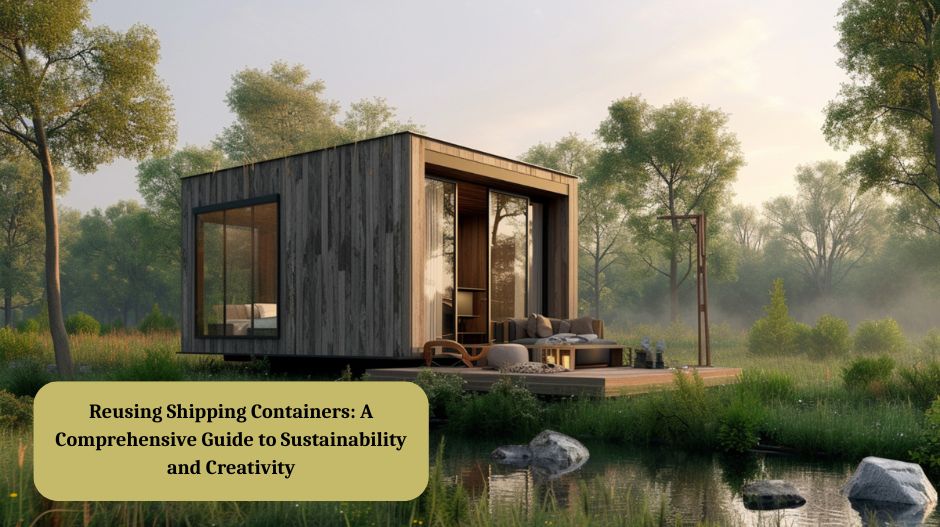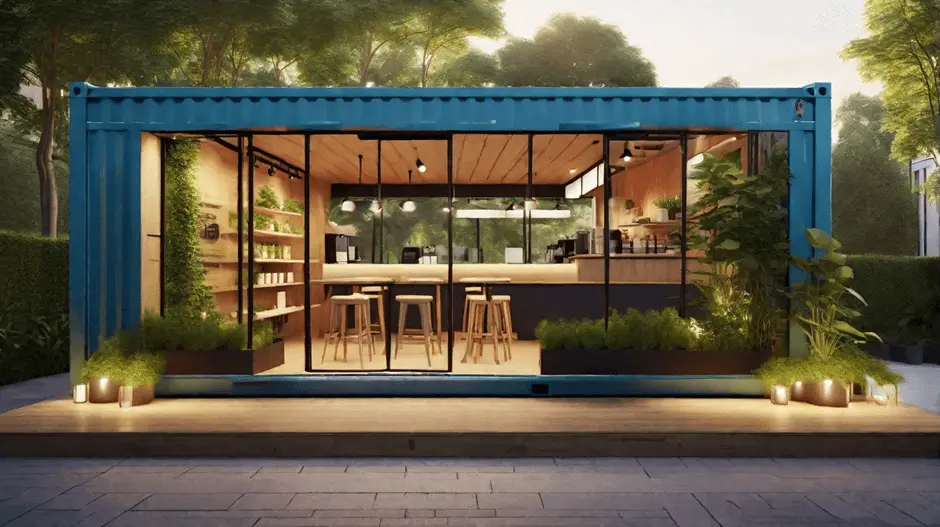Introduction

Currently, sustainability and innovation are interconnected, and shipping containers turned out to be one of the most effective and environment-friendly materials for construction. To be clear, containers were initially intended for moving cargo across seas, but people have recently started using these strong steel frames for a wide range of inventive and functional purposes. This article provides a clear overview of the numerous possibilities for remodeling a shipping container including environmentally friendly homes, flexible commercial buildings, and more.
Why Choose Shipping Containers?
Sustainability and Environmental Benefits
Recycling shipping containers also helps support sustainability since the creation of new buildings decreases. They are cost-effective in construction and also reduce wastage hence promoting environmentally conscious construction. So, reusing containers means saving the materials that would have been used for the newly constructed buildings and reducing the emission of greenhouse gases.
Durability and Structural Integrity
Shipping containers are made to endure the rigorous weather conditions associated with sea transport and therefore very strong. Their construction is made of steel and this gives them strength and durability therefore when you reuse, your structure made out of the containers will last for a long time without the need for frequent repairs.
Cost-Effectiveness
The idea of having shipping containers act as building modules can actually be cheaper than conventional building supplies. Containers are found easily all over the world as they come in standard sizes thus ease of handling the transportation part. The costs remain relatively low which means they can be used in large and small projects alike, intricate and simple concepts.
Practical Applications of Shipping Containers
Residential Uses
Container Homes: Container homes are widespread among people who care about the environment and are looking for a creative solution to a house. They can be simple single-container homes and large sophisticated homes with, multiple containers which provide comforts of the contemporary world and aesthetic interiors.
Accessory Dwelling Units (ADUs): Shipping containers may be used as separate units for residential units in most restricted buildings for additional rooms for visitors, home workplaces, or lease units. Due to the maximal compactness and modularity of the last ones, they are more suitable for usage in cities with limited territory.
Commercial and Retail Spaces
Pop-Up Shops and Cafes: Containers are ideal for businesses that require short-term licensed premises for instance a shop, a food cart, or a cafe. Due to the portability of the booths and their modularity, these can be easily deployed and rearranged in different locations and events.
Offices and Workspaces: It becomes standard to utilize containers as offices and working areas because it is cheaper in comparison with the construction of working buildings. They can be insulated, they can be fitted with windows and services which makes them comfortable for employees.
Educational and Community Uses
Schools and Classrooms: Some of them are converted into Classrooms and educational centers to be used in the needy areas or the regions that were affected by calamities. They give a fast and relatively long-term remedy to the development of urgent educational requirements.
Community Centers and Libraries: Self-storage units can be turned into communes, reading rooms, or playgrounds to encourage people’s communication and receive necessary facilities in cities or the countryside.
Design and Customization
Architectural Flexibility
Containers’ principle advantage from an architectural standpoint is versatility; they may be altered and stacked in many formations. Containers can be, one on top of the other, aligned in different ways and wedged together with ordinary architecture to bring out the needed look and feel.
Interior and Exterior Finishes
Insulation and Climate Control: Climate control and changes in the environment are critical whenever modifying a shipping container for use. Elements like spray foam insulation or insulation panels assist in controlling internal temperatures and lowering the usage of energy.
Exterior Modifications: In terms of appearance, containers can be lined with wooden planks, metallic sheets, or stucco among other features to give the outer layer a new look and better protection against the outside elements. The others include washing areas, changes in balcony heights and location, and extensions in windows, doors, and roofs, among others.
Challenges and Considerations
Structural Modifications
Converting shipping containers into living accommodations needs refurbishments of the structure for habitation purposes to be safe and comfortable. others are cutting door and window apertures, and ensuring that reinforcement is made on walls as well as carrying out research on any signs of rust or corrosion.
Building Codes and Permits
Importantly, however, a person who decides to recycle these shipping containers and use them for construction purposes needs to consult with codes that apply to that locality and possibly gain the requisite permits. Laws concerning the construction of container homes may differ based on the regional zoning laws, the number of foundational supports allowed, and other essential occupancy issues.
Environmental Impact
Recycling shipping containers is a sustainability advantage yet that should not overshadow aspects such as transportation costs, and construction. Reducing transportation distances fixed and integrating environmentally friendly construction materials and techniques can add to sustainability features.
Conclusion
The use of shipment containers is a sustainable and effective concept in the construction industry because they provide a creative and efficient way of constructing buildings. Containers can be used for dwelling places like container homes, for a business like commercial use, and for societal improvement projects like a community container project. Freeing up these multipurpose structures helps conserve the environment besides adding inventiveness and stability in the use of buildings that can fit our contemporary architectural and societal requirements. Those shipping containers are not only rigid and portable but also flexible and adjustable; discover how they can turn your next conventional construction project into an eco-friendly win.
